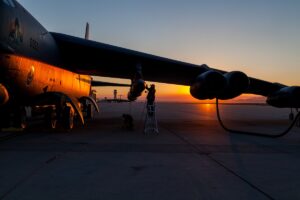
The U.S. Air Force plans to hold a flight demonstration of the AGM-183 Air-Launched Rapid Response Weapon (ARRW) by Lockheed Martin [LMT] this month. "We’re hoping that our flight demonstrator for our hypersonic weapon will be successful this month and that we'll get into production next year," Air Force Acquisition Chief Will Roper told the Air Force Association Doolittle Forum on Dec. 15. If that happens, ARRW would become the U.S.' first fielded hypersonic weapon. Roper said on Dec. 15…














